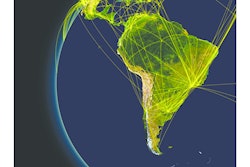
The reality is that Supply chain has changed. It has moved beyond being a linear “chain” to a network of suppliers, distributors, facility types, forms of replenishment, cycles of supply, types of demand, the fickle nature of consumers or buyers, and the readiness of information about price, availability and alternatives. It is more complex, and changing at an ever-increasing rate. Employees must multiply their competencies to keep up.
Companies and employees must create ways to continuously learn, and learn rapidly. Innovation in supply and demand networks is happening so quickly, that just learning the “new thing” and going back to business is no longer sufficient. We must change our approach to learning, making it both continuous and challenge-based, to create better learners, rather than just better “doers.”
Teams can no longer specialize in a single silo, and expect to be rewarded for doing well only in their area of expertise. They must think in an integrated fashion across the entire supply and demand network. How will my actions, processes, decisions and priorities impact this now-magnified, super-fast, demand-driven world we live in?
Productivity of repetitive tasks is no longer the differentiator in the supply chain. It is the advanced decision-making, how we deal with exceptions, and the judgment that must be used to prioritize the company’s values that now is required to operate a supply and demand network. Those values include customer satisfaction and responsiveness, environmental sustainability, employee appreciation and engagement, and brand perception. Each operational component of the commerce chain must be driven seamlessly, requiring a shift from functional silos to interoperable and conceptually aligned end-to-end flexible processes.
There is one more factor: employees also have changed. Approximately 40 percent of the workforce is now Millennials; by 2017 it will be about 70 percent. Millennials learn differently, have different values in terms of how they relate to their work, and therefore demand different management styles and resources. In supply chain, integrated knowledge of how the networks operate is locked up in the minds of Boomers and Matures who teach the way they learn: by telling. Millennials learn by doing. (See related story on Page 28).
So then, what type of new learning and development is required? First, it’s a new kind of learning. It’s challenge-based, with real context about the real environment in supply chain. We use online, interactive, game-based simulations for this because we are a global company with multiple locations. Similarly valuable learning approaches can include stories, case studies, and examples that have challenges for the learners to solve. In the day-to-day environment, you need real-time, just-in-time performance support, which includes quick reference on how to perform tasks. Finally, the greatest impact comes from aligning each employee, team, location and function across the organization with the metrics and goals, vision and values of the organization—with reinforcement across tactical day-to-day activities, and especially when any organizational or systematic change is being implemented.
What we are seeing is an increased rate of cross-training, knowledge management and knowledge transfer out of the minds of a few long-tenured experts into learning objects, real-time sharing of best practices for continuous improvement, and values—and priorities—driven simulations to challenge the cross-functional thinking, that build a base of how to approach complex supply chain issues in the context of the challenges that occur. This type of learning enablement doesn’t create direct “if this, then do this” responses in employees. Instead, it creates good decision-makers who can reference examples they’ve heard, and make good judgment calls when a clear, black-and-white answer, is not readily at hand.
It’s the cross-trained, context-enabled, integrated decision-makers that will make the difference. How are you, as an employee or an organization, multiplying the impact of those employees by giving them learning and development opportunities and resources to keep up?










